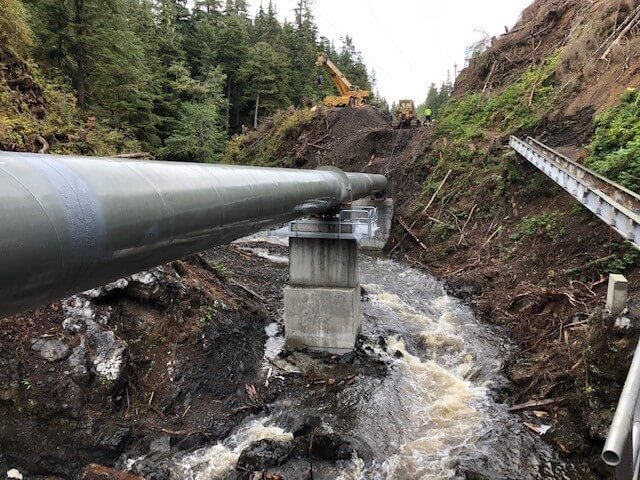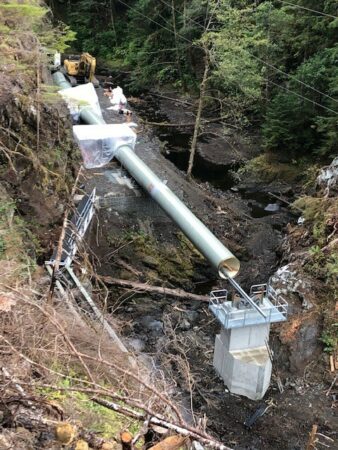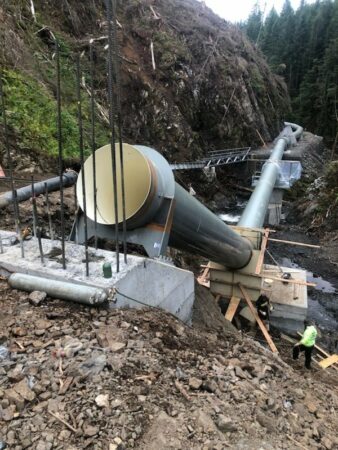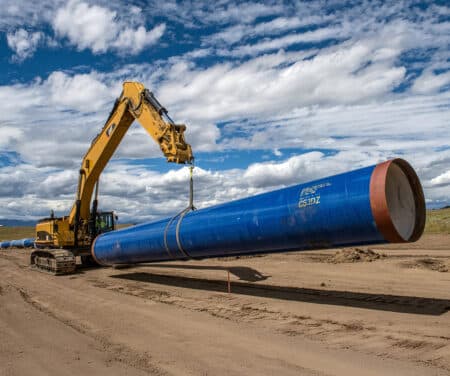Gunnuk Creek Hydro Electric Penstock

Pipe Specifications:
Tons:
Owner:
Engineer Firm:
Contractor:
Located on the Inside Passage about 100 miles south of Juneau, the remote island town of Kake, Alaska, is not connected to the mainland electrical power grid. The 600 town residents rely on four diesel generators for their municipal electricity. Seeking a cleaner and less expensive source of power, the Inside Passage Electric Cooperative (IPEC) developed the Gunnuk Creek Hydro Electric project to provide Kake a second source of electricity.
Part of the hydro project includes a 54-inch diameter steel penstock that connects an existing reservoir to a powerhouse constructed 2,000 feet downstream. The penstock delivers water to the hydro plant, which when operational in 2021, will supply half of Kake’s electrical power needs.
Due to steep terrain, conventional trench construction was not feasible for much of the alignment. The penstock is largely installed above ground on a narrow shelf road, supported by series of ring girders set on piers as well as concrete saddles. The penstock crosses Gunnuk Creek in two places, rising 30 feet above the creek bed.
The superior beam strength of steel pipe enables our team to produce long self-supporting pipe spans up to 90 feet in length. At one location, a 240-foot long aerial crossing is made with just two intermediate piers for support.
The remoteness of the site presented some engineering challenges. A conventional crane was not feasible to set the penstock on its supports. In some locations, the field team set 40-foot sections of the 54-inch diameter pipe on a series of rollers, butt welded together, and cantilevered each section one at a time to reach the supporting piers. A crew also used a yarder aerial cable system, often seen in the logging industry, to fly various pipe sections along the alignment. The pipe was delivered to the site via ocean-going barges.




